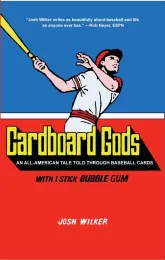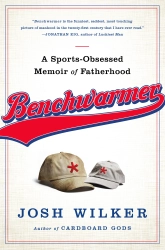Paul Lindblad was a top middle reliever for many years in the American League. He is shown here after helping the A’s win their third straight World Championship by posting the best ERA of his career, 2.06. Just below the stat line with that information is a (somehow fittingly) terse textual note further attesting to Paul Lindblad’s capabilities: “Paul had 0.00 E.R.A. in 1973 series.” For some reason I’m inclined to believe he plied his trade with very little ego. He certainly seems in this photo to be far from displaying the air of complacent self-congratulation that supposedly has a tendency to infect members of a championship squad.
But I really don’t know much about Paul Lindblad. Before becoming fascinated over the last few weeks by his expression on this card, my only connection with him beyond a vague appreciation of his membership in Oakland’s outstanding relief corps was my own tic-like predilection as a child for saying aloud his unusual last name, which probably seemed to my Mad Magazine-devouring mind like one of the spelled-out sound effects in a Don Martin cartoon. To this connection I can only add the fresh shock of just finding out, while casting around for more information on the man with the arrestingly troubled mien, that Paul Lindblad died in 2006 (see Catfish Stew). His page on baseball-reference.com now has a death date, as well as an epitaph in the sponsor section, supplied by someone named Wolfie: “Lindy: Quite simply, one of the best guys ever to put on a uniform.”
I’m inclined to believe those words, but then again you can’t be much more of a baseball outsider than me, so all I can really add to the story of Paul Lindblad is the trivial, groundless, ridiculous belief that in the photo shown above he is trying to decide if he should finally grow a mustache.
The hoopla that such an act might have once created is long gone, this card coming out three years after the A’s broke the baseball facial hair line in 1972. Not coincidentally, Paul Lindblad, after spending several years with the A’s prior to 1972, had been toiling for the Rangers that pivotal year, and by the time he returned to the A’s the hippie-lip revolution had already occurred. In fact, by 1975, players on all teams save for some last holdouts (such as Cincinnati), where conservative grooming codes continued to strain against the grain of the times, were busting out beards and mustaches, muttonchops and fu manchus. To have a mustache was no longer in any way a declaration of independence. It was merely a personal choice.
And this is exactly when the world got confusing. This is exactly when the 1970s truly became the Me Decade. Everyone was on their own to make their own choices about everything. Grow a mustache, don’t grow a mustache. Do your own thing, don’t do your own thing. Who cares? No one. You’re on your own.

Paul Lindblad Ponders Growing a Mustache, 1976
Like its immediate predecessor, this 1976 card also has one brief line of text on the back side, at the bottom, below the impressively long block of statistics listing all the years he’s been in the league on the left and all his stingy earned run averages on the right:
“Had 385 straight errorless games.”
While his stalwart professionalism is on display on the back of the card, the front of the card shows that he has yet to decide the quandary that has been on his mind since at least 1975. His upper lip remains bare, suggesting that he decided in the negative, but his expressive eyes overrule this suggestion, making clear that the matter remains unresolved.
If anything, Paul Lindblad seems even more undecided. He is a year older, a fact that seems to register almost imperceptibly in his somehow slightly less ruddy features, and he seems to have grown a little more melancholy. The featureless blue sky behind him, where the year before there had been the sheltering embrace of a ballpark, adds to the feeling that Paul Lindblad is a little more alone this year than he was the year before. Many of the championship A’s are still around, but they won’t be for long. And the biggest, loudest A of all, Reggie, has moved on.
In the ensuing silence, Paul Lindblad continues to ponder.
My father once told me that one thing that helped get him through the 1970s was his work. It wasn’t his happiest epoch. As suggested in the previous chapter’s description of my family’s early-’70s living arrangement, he began the Me Decade by going to unusual lengths to remain part of an “us.” After a couple of years of the ultimately aborted experiment in open marriage, he spent the rest of the decade living in a studio apartment in Manhattan while his family lived several hours away by Greyhound bus, in Vermont. This had to have been painful.
But he had his work. He was a sociologist, for most of that decade a project leader on a research team charged with a massive evaluation of the effects of city services on all levels of the population. He threw himself into his work, as the saying goes, but quietly, selflessly. He was a Paul Lindblad type. He showed up day in and day out in a way that not only benefited the project he was working on but that helped feed much-needed money to the frequently imperiled utopian dream of his distanced immediate family.
He wore a mustache for some of that decade. But this facial hair was never part of some rousing movement, large or small, like the swashbuckling 1972 A’s or the “let that freak flag fly” hippies. I have referred to it elsewhere as hair shrapnel, a piece of the general hairiness of the culture of the time that seemed to have landed randomly on my dad’s face. I don’t know if I got that right, however, for he had indeed made a decision to grow a mustache, and he had made it alone. He had then worn the mustache for some years. And then, in another solitary decision, he had chosen to remove the mustache. I can see him shaving it off one evening in the bathroom of his apartment, then leaving the bathroom to unroll his foam sleeping mat on the floor below the one window, going to sleep, getting up the next day, and going to work.
“I absorbed myself in my work,” he once told me, speaking of the entire 1970s.
As for Paul Lindblad, he is shown here still in the midst of his own increasingly solitary and still unresolved decision. The Topps people, perhaps attempting to dim the increasing pathos of another close-up of Paul Lindblad’s undecided face, have placed him in his workplace. This serves to distance the viewer from his face, but it also seems to lighten the expression ever so slightly, Lindblad not wrapped up quite so much in his unresolved solitary decision, instead able to put himself into the working mind he has been so adept at becoming absorbed in since breaking into the league over a decade earlier. Still, there is ample evidence that Paul Lindblad still has things on his mind. He has by now been left behind by most of the championship A’s. He perhaps senses that the end in Oakland is coming for him too. In fact, by the time I found this card in a 1977 pack, Paul Lindblad had been sold to the Texas Rangers.
In such a world where the very ground can be pulled from beneath you, when your team can be taken away, when your family can be taken away, when the job you throw yourself into can be lost (my father, after spending years on the research project, lost his job near the end of the decade by the abrupt end of funding for the project, all the research halted before any conclusions could be reported), certain personal choices turn out to be all you really have left. They are the only thing you can control. And yet, they are pointless, absurd. To grow a mustache or not to grow a mustache, that is the question. The implied answer—what’s the difference?—lingers on the horizon like some kind of soundless cosmic tornado with the power to strip your world of all meaning.

Is that all there is, is that all there is?
If that’s all there is my friends, then let’s keep dancing
– Peggy Lee
When I found out that Paul Lindblad had died, I also found out that through the last decade or so of his life he suffered from Alzheimer’s disease, that gradual, inexorable cosmic tornado.
He is shown here on the brink of the 1978 season, his last in the major leagues. He started the year with the Rangers but was purchased by the surging Yankees late in the season. For what it’s worth, his last official moment in a major league uniform was as a participant in a world championship celebration.







